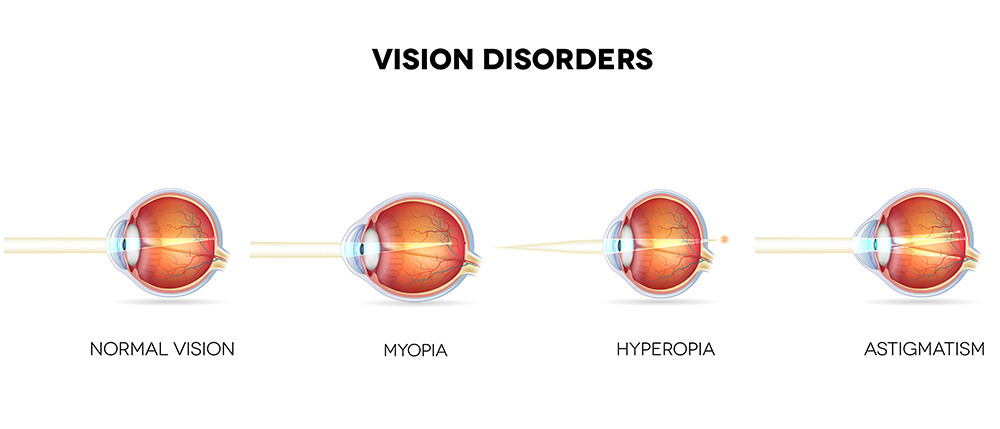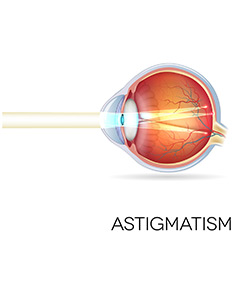You are probably most familiar with LASIK. In the LASIK procedure, a thin flap of cornea is surgically lifted in a single sheet allowing blade-free laser treatment of the exposed inner surface. This reshapes the curvature of the cornea and allows light to focus on the retina, resulting in clearer vision. Following the procedure, the flap is repositioned and the corneal tissue quickly and naturally bonds without the use of stitches
LASIK, PRK and LASEK
LASIK – LASER VISION CORRECTION
PRK and LASEK
The other two types of laser refractive procedures – PRK and LASEK – are for patients with thin corneas, loosely attached epitheliums, or for those patients for whom we cannot create a corneal flap. Whether you’re a candidate for LASIK, PRK or LASEK will be determined at your initial evaluation.
PRK (Photo-Refractive Keratectomy) and LASEK differ from LASIK in that they do not involve the creation of a corneal flap. Instead, the surgeon gently removes the outer layer of the cornea. The same cool laser used during LASIK is applied to the cornea. Also entirely blade-free, PRK and LASEK achieve the same optimized vision as LASIK but with a slightly longer recovery period. A contact lens or bandage contact lens is placed on the eye for a few days to aid in the healing process and make it more comfortable for the patient.
Regardless of which procedure is right for your eyes, amazingly, the laser vision treatment process requires only a few minutes from start to finish. The treatment itself is painless and there may be some minor discomfort in the first few hours or days following the procedure. Many patients experience improved, clearer vision almost immediately following the procedure and return to daily routines such as work or other activities the next day.

VISION DISORDERS
LASIK for Myopia (Nearsightedness)
Over 65 Million Americans are myopic, or nearsighted. Nearsightedness occurs when the eye is too long, or the cornea is too steep. This causes light rays entering the eye to focus in front of the retina, instead of directly on it, making distant images blurry. In LASIK the laser is used to flatten the cornea, moving the focal point back onto the retina resulting in clear vision.
LASIK for Hyperopia (Farsightedness)
Farsightedness occurs when the eye is shorter than normal or the cornea is too flat. This causes images to be focused behind the retina resulting in blurry vision. In LASIK the laser is used to steepen the cornea, moving the focal point forward onto the retina resulting in clear vision.
LASIK for Astigmatism
Astigmatism occurs when the cornea is shaped such that the eye has two focal points rather than one. This also results in blurred vision. In LASIK the laser is used to shape the cornea such that the two focal points come together, resulting in clear vision.
LASIK for Myopia (Nearsightedness)
Over 65 Million Americans are myopic, or nearsighted. Nearsightedness occurs when the eye is too long, or the cornea is too steep. This causes light rays entering the eye to focus in front of the retina, instead of directly on it, making distant images blurry. In LASIK the laser is used to flatten the cornea, moving the focal point back onto the retina resulting in clear vision.

LASIK for Hyperopia (Farsightedness)
Farsightedness occurs when the eye is shorter than normal or the cornea is too flat. This causes images to be focused behind the retina resulting in blurry vision. In LASIK the laser is used to steepen the cornea, moving the focal point forward onto the retina resulting in clear vision.

LASIK for Astigmatism
Astigmatism occurs when the cornea is shaped such that the eye has two focal points rather than one. This also results in blurred vision. In LASIK the laser is used to shape the cornea such that the two focal points come together, resulting in clear vision.

IF YOU'VE BEEN CONSIDERING LASIK
Why not take a minute to schedule your evaluation with Dr. Krebs, our caring and highly trained eye surgeon? Or call our Laser Vision Correction department at 989-799-2020 in Saginaw, and 989-872-4900 in Cass City.
